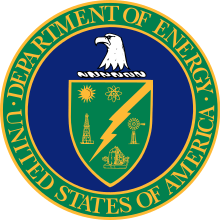Research reactor
| Science with Neutrons |
|---|
 |
| Foundations |
| Neutron scattering |
| Other applications |
|
| Infrastructure |
|
| Neutron facilities |

Research reactors are nuclear reactors that serve primarily as a neutron source. They are also called non-power reactors, in contrast to power reactors that are used for electricity production, heat generation, or maritime propulsion.
Purpose
The neutrons produced by a research reactor are used for neutron scattering, non-destructive testing, analysis and testing of materials, production of radioisotopes, research and public outreach and education. Research reactors that produce radioisotopes for medical or industrial use are sometimes called isotope reactors. Reactors that are optimised for beamline experiments nowadays compete with spallation sources.
Technical aspects
Research reactors are simpler than power reactors and operate at lower temperatures. They need far less fuel, and far less fission products build up as the fuel is used. On the other hand, their fuel requires more highly enriched uranium, typically up to 20% U-235, although some use 93% U-235; while 20% enrichment is not generally considered usable in nuclear weapons, 93% is commonly referred to as "weapons grade". They also have a very high power density in the core, which requires special design features. Like power reactors, the core needs cooling, typically natural or forced convection with water, and a moderator is required to slow the neutron velocities and enhance fission. As neutron production is their main function, most research reactors benefit from reflectors to reduce neutron loss from the core.
Conversion to LEU
The International Atomic Energy Agency and the U.S. Department of Energy initiated a program in 1978 to develop the means to convert research reactors from using highly enriched uranium to the use of low enriched uranium, in support of its nonproliferation policy.[1][2] By that time the U.S. had supplied research reactors and highly enriched uranium to 41 countries as part of its Atoms for Peace program. In 2004, the U.S. Department of Energy extended its Foreign Research Reactor Spent Nuclear Fuel Acceptance program until 2019.[3]
Also in 2004, the Texas A&M reactor switched to LEU after decades using HEU. These changes are a part of an anti-terrorism initiative since 9/11 begun by the Bush Administration.
Designers and constructors
While in the 1950s, 1960s and 1970s there were a number of companies that specialized in the design and construction of research reactors, the activity of this market cooled down afterwards, and many companies withdrew.
The market has consolidated today into a few companies that concentrate the key projects on a worldwide basis.
The most recent international tender (1999) for a research reactor was that organized by ANSTO for the design, construction and commissioning of the OPAL reactor. Four companies were prequalified: AECL, INVAP, Siemens and Technicatom. The project was awarded to INVAP that built the reactor. In recent years, AECL withdrew from this market, and Siemens and Technicatom activities were merged into AREVA.
Classes of research reactors
- Aqueous homogeneous reactor
- Argonaut class reactor
- DIDO class, six high-flux reactors worldwide
- TRIGA, a highly successful class with >50 installations worldwide
- SLOWPOKE reactor class, developed by AECL, Canada
- Miniature neutron source reactor, based on the SLOWPOKE design, developed by AECL, currently exported by China
Research centers
- see also the sections on Research Reactors in List of nuclear reactors.
Research centers that operate a reactor:
- BR2 Reactor (100 MW) research reactor at the Belgian Nuclear Research Center SCK•CEN, Mol, Belgium.
- Budapest University of Technology and Economics in Budapest, Hungary
- Helsinki University of Technology in Espoo, Finland
- Institut Laue-Langevin, a French-German-British neutron source in Grenoble, France
- Balseiro Institute / Bariloche Atomic Center operates RA-6, Argentina
- ZED-2 (1960–) at AECL's Chalk River Laboratories near Deep River, Ontario, Canada
- McMaster Nuclear Reactor (5 MW, 1959–) in Hamilton, Ontario, Canada
- National Research Universal Reactor (135 MW, 200MW, 1957–) at AECL's Chalk River Laboratories near Deep River, Ontario, Canada
- Petten nuclear reactors (30 kW and 60MW, 1960–) in Petten, Netherlands
- Orphee of the Laboratoire Léon Brillouin at Saclay, France
- FRM II at Technische Universität München in Garching, Germany (20 MW, 2004–)
- Reactor Institute Delft at the Delft University of Technology, a 2 MWt pool-type research reactor, The Netherlands.
- BER II located at the Helmholtz-Zentrum Berlin, neutrone source in Berlin, Germany (10 MW)
- Mainz located at the Universität Mainz, Institut für Kernchemie in Mainz, Germany (0,10 MW, shortterm peakpower for 0,03 s: 250 MW)
- Vienna located at the Technical University Vienna, TU Wien, Atominstitut in Vienna, Austria (250 kW)
- IRT-2000 (2 MW) research reactor at the Bulgarian Academy of Sciences research site, Sofia, Bulgaria.
- OPAL (20MW, 2006–) at Lucas Heights near Sydney, Australia
- IEA-R1 (3.5MW, 1957) pool-type reactor at Instituto de Pesquisas Energéticas e Nucleares (IPEN) in São Paulo, Brazil.
- Pool-type reactor at Moscow Engineering Physics Institute in Moscow.
- SAFARI-1 at NECSA, Pelindaba, South Africa
- HANARO at Korea Atomic Energy Research Institute (KAERI) in Daejeon, Republic of Korea
- LVR-15 at Nuclear Research Institute , Řež, Czech Republic
- HFIR at Oak Ridge National Laboratory in Oak Ridge, TN, USA
- ATR at Idaho National Laboratory in Idaho Falls, ID, USA
- the University of Missouri Research Reactor
- the Washington State University Nuclear Radiation Center, (Washington State University Reactor
- CROCUS, a nuclear reactor operated by the École polytechnique fédérale de Lausanne
- Maria reactor (30 MW) at POLATOM Institute of Nuclear Energy in Świerk-Otwock, near Warsaw, Poland
- TRIGA Mark I at the University of California, Irvine, in Irvine, California, US
- TRIGA Mark-II Training and Research Reactor at Istanbul Technical University, Istanbul, Turkey
- Nuclear Research Center operates ETRR-1 (2 MW, 1961–) and ETRR-2 (22 MW, 1997–) in Inshas, Egypt
Decommissioned research reactors:
- ASTRA, 10MW, 1960–1999, in Seibersdorf, Austria
- CONSORT, a 100 kW reactor operated by Imperial College at a site near Ascot, Berkshire, England.
- JASON reactor (Argonaut, 10 kW, 1962–1996) in a 17th-century building at the Royal Naval College in Greenwich near London
- MOATA (Argonaut, 100 kW, 1961–1995) and HIFAR (DIDO, 1958–2007 at Lucas Heights near Sydney, Australia
- Nuclear Power Demonstration (20 MW, 1961–1987) at AECL's Rolphton plant near Deep River, Ontario Canada
- NRX (1952–1992) at AECL's Chalk River Laboratories in Deep River, Ontario, Canada
- PLUTO reactor (DIDO, 26MW, 1957–1990) in Harwell, Oxfordshire, England
- Pool Test Reactor (10 kW, 1957–1990) at AECL's Chalk River Laboratories in Deep River, Ontario, Canada
- WR-1 (60 MW, 1965–1985) at AECL's Whiteshell Laboratories, near Pinawa, Manitoba
- ZEEP (1945–1973) of the Chalk River Laboratories in Deep River, Ontario, Canada
- More Hall Annex (100 kW, 1961–1988) at the University of Washington in Seattle, Washington, United States
- Ewa reactor (2–10 MW, 1958–1995) at POLATOM Institute of Nuclear Energy in Świerk-Otwock, near Warsaw, Poland
References
- ↑ "CRP on Conversion of Miniature Neutron Source Research Reactors (MNSR) to Low Enriched Uranium (LEU)". Nuclear Fuel Cycle & Waste Technology. International Atomic Energy Agency. 13 January 2014. Retrieved 25 October 2015.
- ↑
- ↑
- WNA Information Paper # 61: Research Reactors
- Nuclear Nonproliferation: DOE Needs to Take Action to Further Reduce the Use of Weapons-Usable Uranium in Civilian Research Reactors, GAO, July 2004, GAO-04-807
External links
- Searchable list of Nuclear Research Reactors in the world
- The National Organization of Test, Research, and Training Reactors, Inc.
- NMI3 - EU-FP7 Integrated Infrastructure Initiative for Neutron Scattering and Muon Spectroscopy
